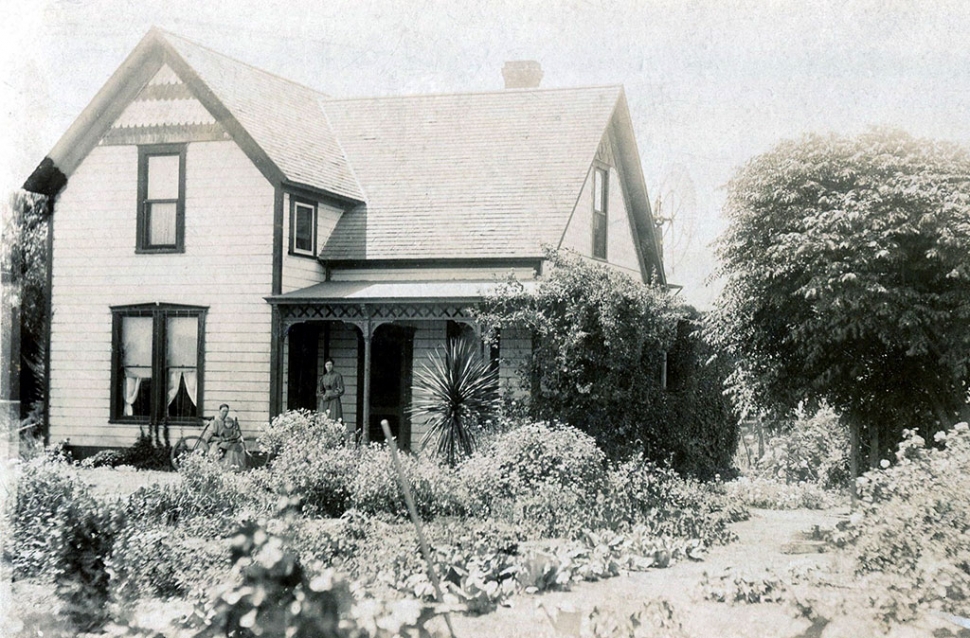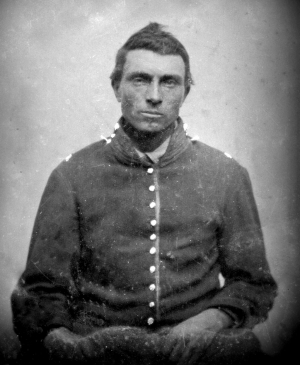|
The Story of Mathew Atmore
 The Atmore home in Sespe purchased by Mathew Atmore. The Atmore family moved to the district in 1877. Photos courtesy Fillmore Historical Museum. By Anonymous — Wednesday, November 25th, 2020
 Mathew Atmore of the Civil War Second California Cavalry. Courtesy Fillmore Historical Museum Matthew Atmore as told to Charles Jarrett by his son, “Buck” Atmore in 1934. Prior to coming to our area, Mathew Atmore had an eventful life. He was one of four brothers who came to Michigan from England at an early age, settling in Kalamazoo, Michigan. He was just 15 when gold was discovered in California, and then began a life that was to be filled with adventure for many years to come. Parties were being organized everywhere to come to go California to search for gold and as the boy watched his older brothers making ready for he trip he determined that he would not be left behind. Secretly making his plans, he was all ready to run away and join a party when his father heard of it, and after presenting him with a hundred dollars, told him to go ahead. Crossing the plains with a wagon train, they reached Placerville in 1852. For four years he probably had about the same fortune as did the majority of gold seekers in California at that time. Books say the yellow metal was plentiful, but actual fortunes founded in Placerville were hard to find. It is likely that his mining ventures were about on a par with those of most “Forty-niners.” In 1856 he decided to leave California for good. He took a boat at San Francisco bound for Panama. Aboard the old side—wheeler were all sorts of returning gold seekers. Some were penniless, some played cards for high stakes, and the ranged from the resplendent suave card sharps and swaggering road agents, to the men who had stakedeverything to search for gold and were now returning , disillusioned, empty handed and aloof in their own misery, Two years back in Michigan was enough for Mathew Atmore, and in 1858 he landed in Placerville the second time. He started freighting mining machinery from Sacramento to Virginia City, but the way of Lake Tahoe and the American river. Driving six head of oxen to a wagon, it took him seven days to do the trip one way. Hay was $80 a tonand sold in bundles tied with rawhide. He received 20 cents a pound for his hauling. Driving an ox team over mountain roads was probably noteworthy for itsthrills, but a greater opportunity for adventure was soon to present itself. In 1861 he was turning his tired animals into the corral at Sacramento when word reached him that they were organizing the Second California Cavalry, and the regiment was all set to head for the south where it would be given an opportunity to help keep the Rebels on the run. Mathew apparently didn’t give the matter much consideration he simply locked the corral gate, sent word to one of his brothers he was going, and was gone. The Second California Volunteer Regiment of cavalry was soon to learn the fallacy of depending too much on army rumors. They weren’t needed just then to keep the Rebs on the run, but there were a lot of Indians whowerepot shooting the immigrants out in Nevada and, would the Second Regiment do something about it before they headed for the main event that was taking place below the Mason-Dixon line? The Second Regiment would, and did, but that attended to, they had another chore to do before they could go see about the war between the North and the South. The government wanted a fort built at Salt Lake City. Forone whole winter the brave cavalry men turned lumberjacks and hauled logs down from the mountains to build Ford Douglas and still stands a few miles out of the city (https://en.wikipedia.org/wiki/Fort_Douglas). After that they did manage to get in on a real fight. Some 700 Indians from a dozen tribes had banded together and they moved west through southern Idaho. The Indians had gone into winter quarters and two companies of the Second Californians were sent out to return them to reservation. During the ensuring fight, Atmore was thrown from a horse onto the frozen ground and broke his hip. Nowadays when a person breaks a bone they won’t let him bat an eye till it’s set and healed, but he had to take a four-day ride to Salt Lake City before he could have it attended to.The injury left one leg considerably shorter that the other for which the government awarded him six dollars a month pension during the later years of his life. He was mustered out at Fort Douglas in 1864 and returned to Michigan where he married Mary Elizabeth Gorham two years later. While in Michigan, they had 4 children, Haydee, Grace, Fred (Buck), and Ruby who died in infancy. The Atmore family moved to this district in 1877, when Mathew Atmore purchased a relinquishment on a homestead located where the Calumet oil lease is now. Due to some error in the land titles he lost the ground he had located on, and a year or so later purchased a relinquishment on 80 acres of land located near the present Atmore place in Sespe. |
